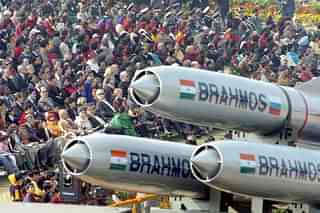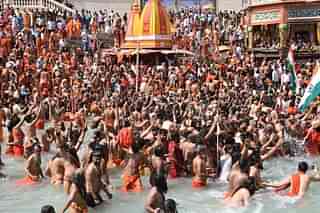Defence
Explained: How Sela Tunnel Gives An Edge To Indian Army Against China
Ujjwal Shrotryia
Mar 11, 2024, 04:56 PM | Updated 09:16 PM IST
Save & read from anywhere!
Bookmark stories for easy access on any device or the Swarajya app.
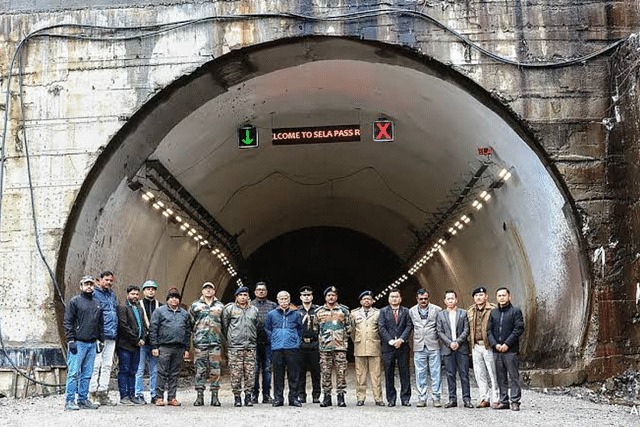
Prime Minister Narendra Modi on Friday (8 March) inaugurated the strategic Sela Tunnel, crucial for the year-round movement of the Indian Army in Arunachal Pradesh.
Constructed at a cost of just Rs 800 crore and cutting through the Sela–Charbela ridge under the massive 13,700 feet Sela Pass, the tunnel is the world's longest twin-tube tunnel at a height of 9,800 feet (3,000 metres).
In comparison, the more than nine-kilometre-long Atal tunnel (under Rohtang Pass on the Manali-Leh highway) is the longest single-tube tunnel at an altitude of close to 10,000 feet.
The tunnel, along with the 500-metre-long Nechiphu Tunnel inaugurated last year, will provide all-weather connectivity between Guwahati in Assam and Tawang in Arunachal Pradesh.
Made on the Balipara-Chariduar-Tawang (BCT) road, movement from the pass is extremely difficult owing to the treacherous weather conditions. In winter months (from November to February), the pass sees heavy snowfall, which has to be cleared by heavy snow cutters and excavators to keep the road open.
While in summer months, due to landslides, the road closes — sometimes several times in a week.
The Sela Tunnel project, comprising two tunnels of 980 metres and 1,555 metres in length, and a 1.2 km link road between each tunnel, will address these road issues apart from reducing the travel time by one hour.
Made by the Border Roads Organisation (BRO), continuously working day and night, the tunnel was inaugurated in record time of close to five years. It will allow all equipment of the forces, including tanks and field howitzers (Bofors and ATAGS), to pass through the tunnel easily.
Connecting Tawang, which was the linchpin of the Chinese assault on India in the 1962 war with Tezpur (330 km away from Tawang), the headquarters of the Indian Army's 4 Corps, the tunnel will ensure quick mobilisation and delivery of supplies to the Indian troops located in remote border posts in the Tawang sector in the event of war, apart from reducing travel time to Bomdila — another tiny town with military significance.
Tawang is the site of the largest Buddhist Monastery in India and a crucial military site. Moreover, it is from Tawang that the venerable Dalai Lama escaped the Chinese assault and crossed into Indian territory.
Sela Pass saw some fighting but was captured by the Chinese following the humiliating withdrawal due to confusion and ineptitude displayed by the higher command.
The tunnel will also allow the army to move equipment and forces without the prying eyes of the Chinese. Movement of troops on the 13,700 feet high Sela Pass is visible to the Chinese, thus removing any surprise factor which is crucial for winning a battle.
Apart from the Sela Tunnel, India is also constructing a 1,700 km long Rs 27,000 crore Frontier Highway, with the Union government inviting bids this January.
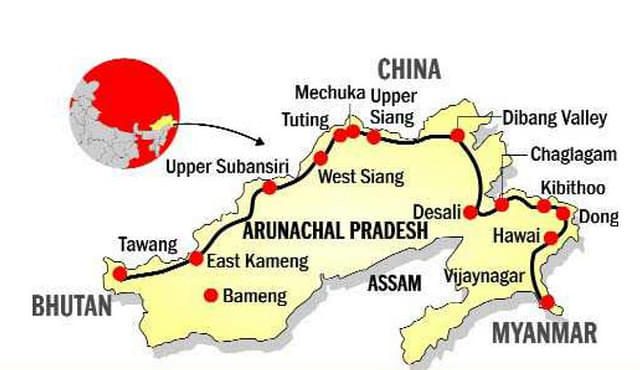
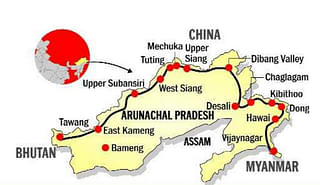
This will connect all the frontier districts and sites along the entire breadth of Arunachal Pradesh, giving the army capabilities to move troops easily from one position to another.
Moreover, the Trans-Arunachal Highway will add another similar boost — except the location of this highway is further deep in the south.
With the completion of these infrastructure projects, the army will soon be in a position to match the Chinese in terms of infrastructure in Arunachal Pradesh — in effect, nullifying their advantage of easy accessibility to their border positions.
Save & read from anywhere!
Bookmark stories for easy access on any device or the Swarajya app.
Staff Writer at Swarajya. Writes on Indian Military and Defence.
Support Swarajya's 50 Ground Reports Project & Sponsor A Story
Every general election Swarajya does a 50 ground reports project.
Aimed only at serious readers and those who appreciate the nuances of political undercurrents, the project provides a sense of India's electoral landscape. As you know, these reports are produced after considerable investment of travel, time and effort on the ground.
This time too we've kicked off the project in style and have covered over 30 constituencies already. If you're someone who appreciates such work and have enjoyed our coverage please consider sponsoring a ground report for just Rs 2999 to Rs 19,999 - it goes a long way in helping us produce more quality reportage.
You can also back this project by becoming a subscriber for as little as Rs 999 - so do click on this links and choose a plan that suits you and back us.
Click below to contribute.



